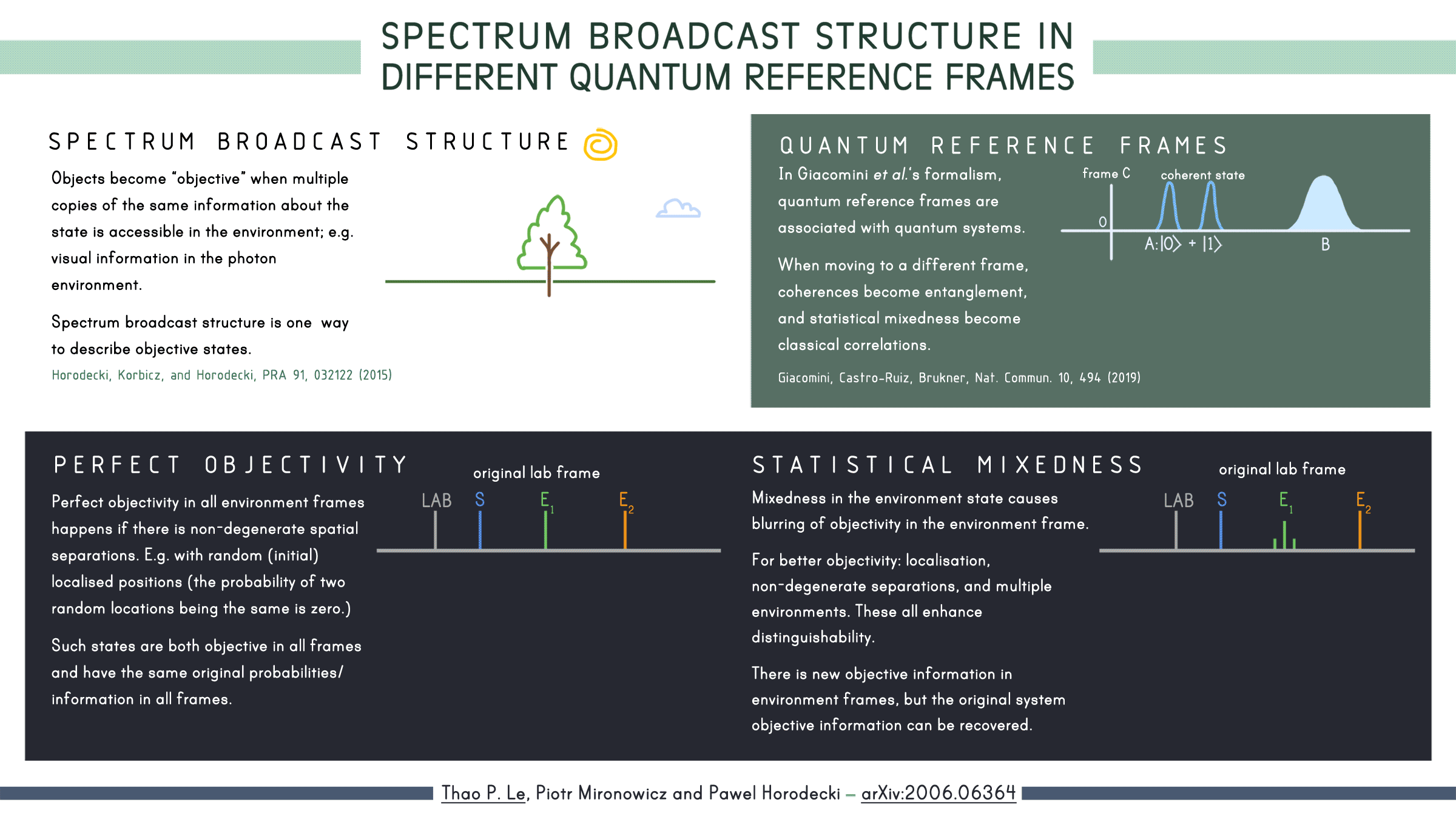Poster: Spectrum Broadcast Structure in Different Quantum Reference Frames
The following poster was presented at Q-TURN 2020 (online), on the 23th - 27th November 2020. The corresponding paper for this work is Blurred quantum Darwinism across quantum reference frames.

Spectrum Broadcast Structure in Different Quantum Reference Frames
Spectrum broadcast structure
Objects become "objective" when multiple copies of the same information about the state is accessible in the environment; e.g. visual information in the photon environment.
Spectrum broadcast structure is one way to describe objective states.
(accompanying figure)
The figure begins with a simple landscape with a tree. The following animation steps occur:
- Light from the sun bounces off the tree. The photon environment "measures" the system.
- Information about the tree, encoded in the light, spreads.
- Various observers then can observe the photons and learn about the tree.
Quantum Reference Frames
In Giacomini et al.'s formalism, quantum reference frames are associated with quantum systems.
When moving to a different frame, coherences become entanglement, and statistical mixedness become classical correlations.
(accompanying figure)
The figure is composed of two parts, one in the reference frame C and one in the reference frame A.
- In the reference frame C, the quantum state of A consists of two coherent peaks. The quantum state of B is simply one peak.
- When moving to the quantum reference frame of A, the state of C now consists of two peaks, and the quantum state of B also consists of two peaks. Furthermore, the peaks of B and C pair up, such that B and C are now entangled.
Perfect objectivity
Perfect objectivity in all environment frames happens if there is non-degenerate spatial separations. E.g. with random (initial) localised positions (the probability of two random locations being the same is zero).
Such states are both objective in all frames and have the same original probabilities/information in all frames.
(accompanying figure)
The figure is composed of two parts, one in the reference frame C and one in the reference frame of environment E1.
- In the reference frame C, the conditional states of the system S, and of the environments E1 and E2 consist of sharp peaks, all at different locations, and all with different relative separations from other system/environments.
- When moving to the quantum reference frame of E1, the conditional states of the original lab frame (C), system S, and environment E2 are sharp peaks, all at different locations, and continue to have different relative separations.
Statistical mixedness
Mixedness in the environment state causes blurring of objectivity in the environment frame.
For better objectivity: localisation, non-degenerate separations, and multiple environments. These all enhance distinguishability.
There is new objective information in environment frames, but the original system objective information can be receovered.
(accompanying figure)
The figure is composed of two parts, one in the reference frame C and one in the reference frame of environment E1.
- In the reference frame C, the conditional states of the system S, and the environment E2 consist of sharp peaks, all at different locations. Meanwhile, the conditional states of E1 consist of three smaller peaks, representing statistical mixedness.
- When moving to the quantum reference frame of E1, there is now three times as many conditional states, representing new classical correlations.